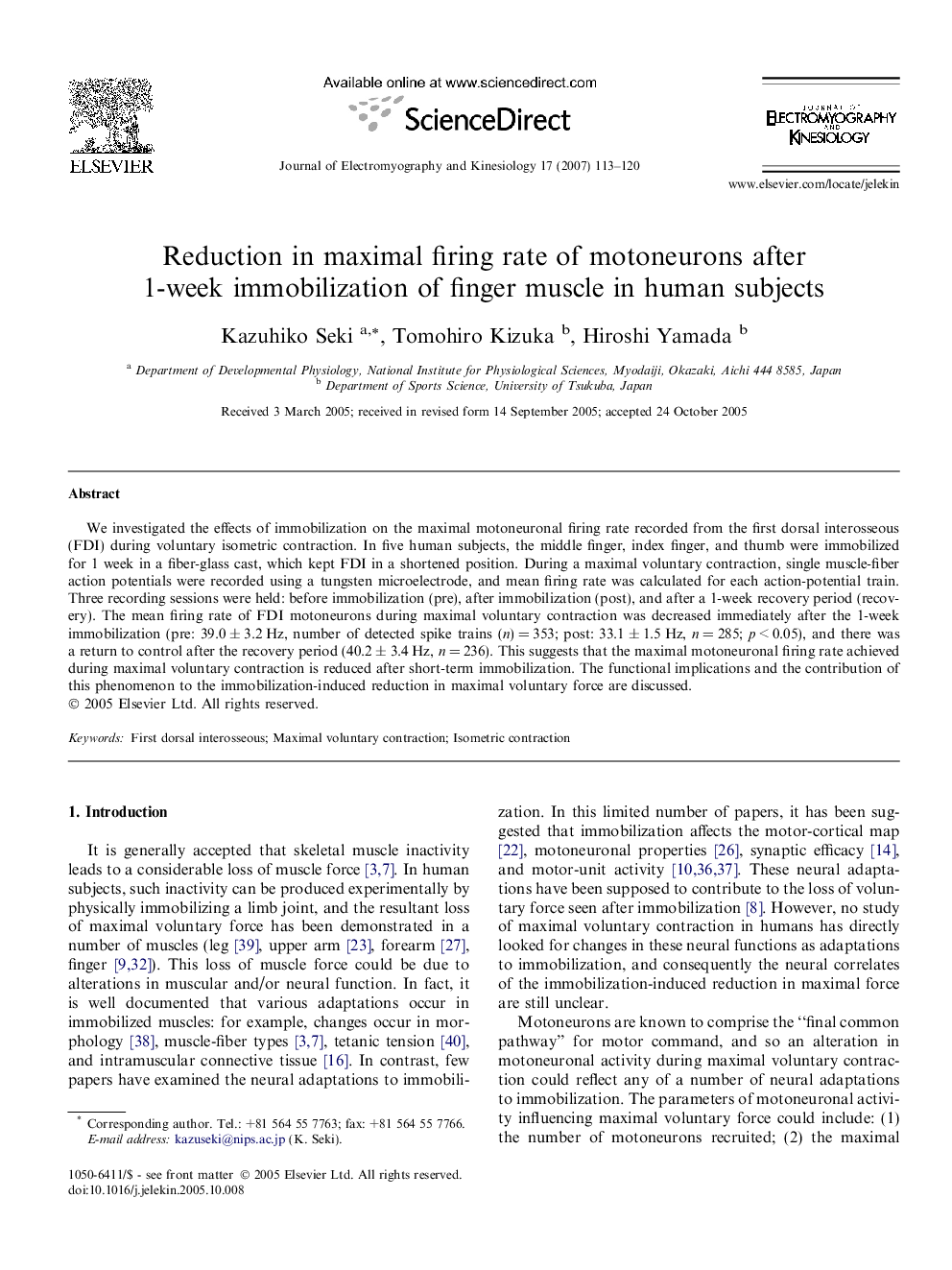| Article ID | Journal | Published Year | Pages | File Type |
|---|---|---|---|---|
| 4065385 | Journal of Electromyography and Kinesiology | 2007 | 8 Pages |
We investigated the effects of immobilization on the maximal motoneuronal firing rate recorded from the first dorsal interosseous (FDI) during voluntary isometric contraction. In five human subjects, the middle finger, index finger, and thumb were immobilized for 1 week in a fiber-glass cast, which kept FDI in a shortened position. During a maximal voluntary contraction, single muscle-fiber action potentials were recorded using a tungsten microelectrode, and mean firing rate was calculated for each action-potential train. Three recording sessions were held: before immobilization (pre), after immobilization (post), and after a 1-week recovery period (recovery). The mean firing rate of FDI motoneurons during maximal voluntary contraction was decreased immediately after the 1-week immobilization (pre: 39.0 ± 3.2 Hz, number of detected spike trains (n) = 353; post: 33.1 ± 1.5 Hz, n = 285; p < 0.05), and there was a return to control after the recovery period (40.2 ± 3.4 Hz, n = 236). This suggests that the maximal motoneuronal firing rate achieved during maximal voluntary contraction is reduced after short-term immobilization. The functional implications and the contribution of this phenomenon to the immobilization-induced reduction in maximal voluntary force are discussed.
